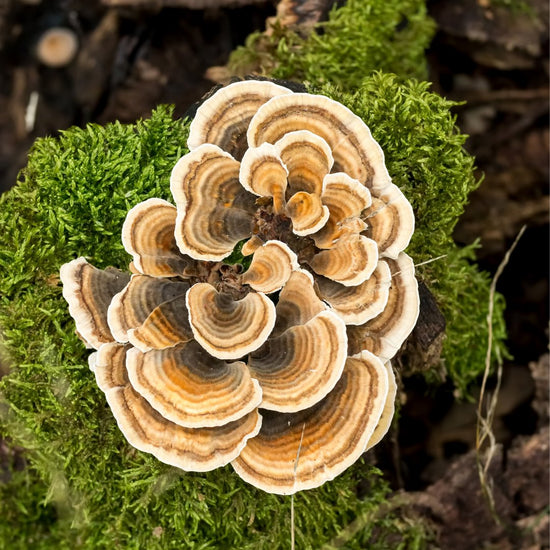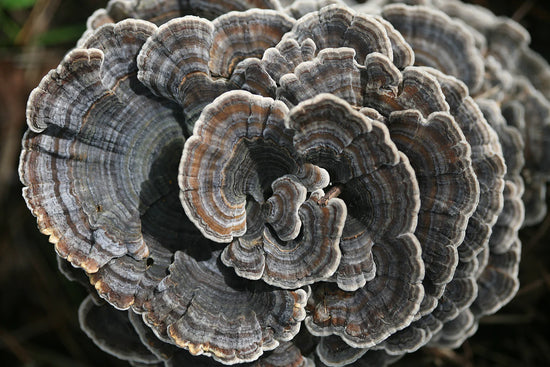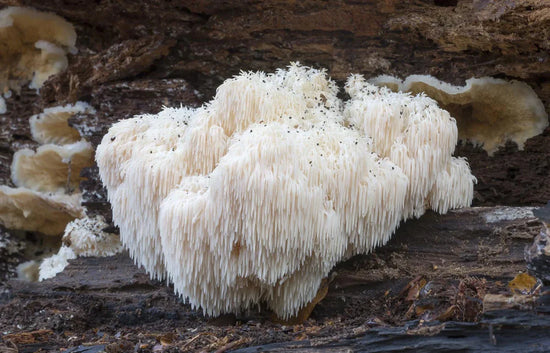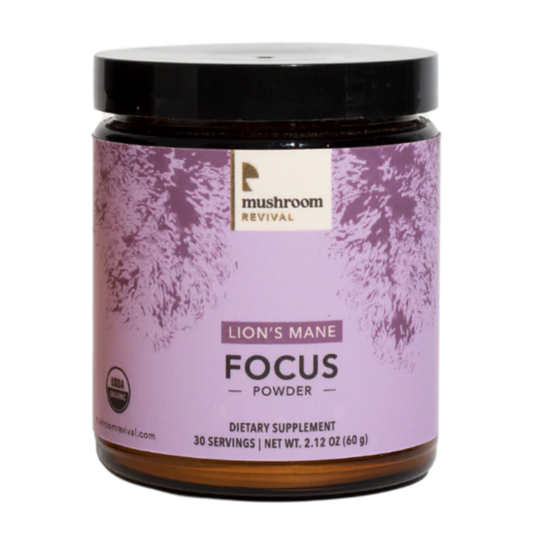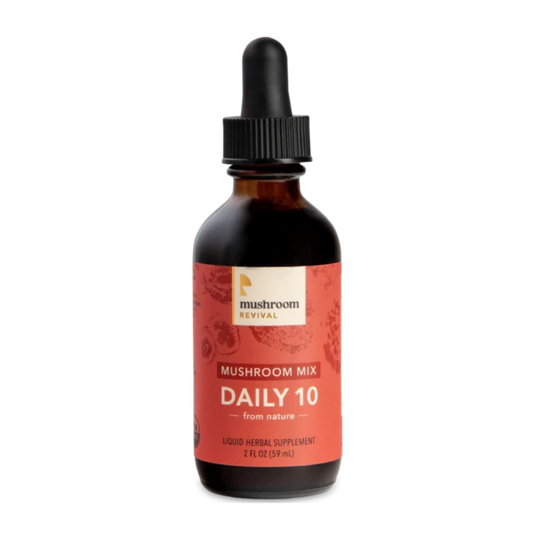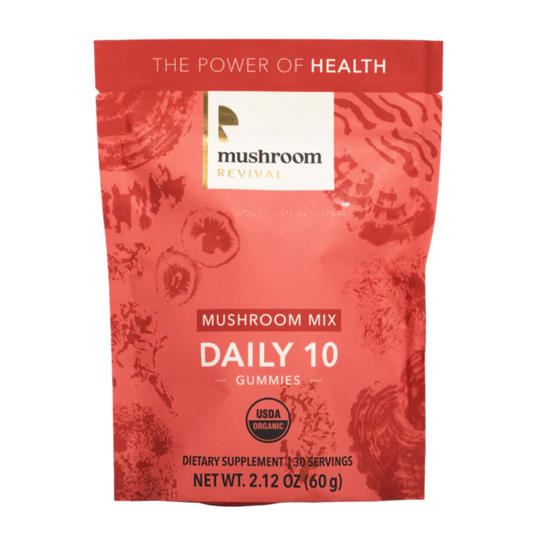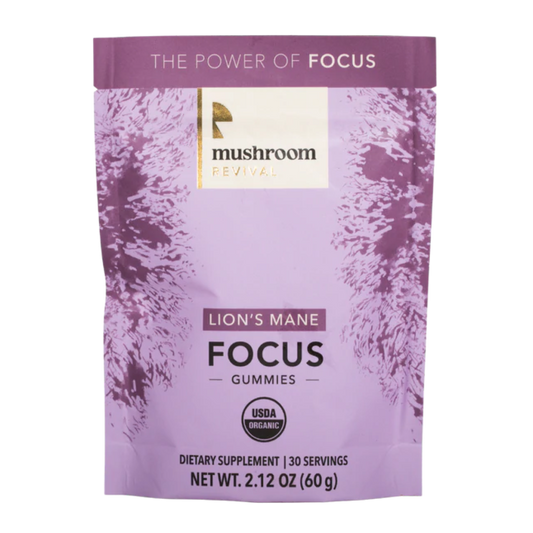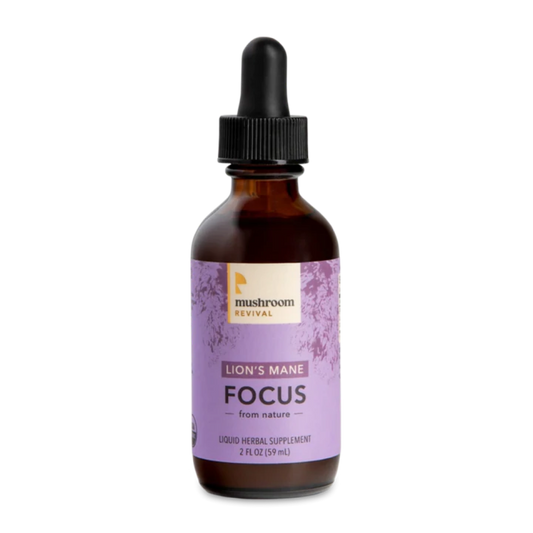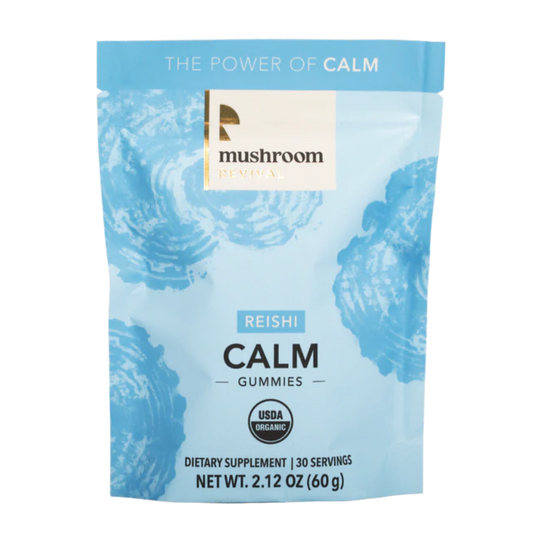TRANSCRIPT
0:16 You're listening to the mushroom revival podcast. Welcome back, everyone. We have my friend Jung on to talk about ovo cordyceps senescence and go SMAs and all the cool things happening. So why don't you start by telling us who you are and what your research is how you got into studying entomology and fungi, specifically ovo quarter subside essence. Hi, everyone. My name is Jung, and I am a graduate student at Harbor Museum of Comparative Zoology. So firstly, a huge disclaimer, I am actually not a mycologist. I love the content. But my background is actually in entomology. I grew up in Sichuan Province, western China. And I've always been interested in this kind of interaction between human and insects. And since I discovered this trade, now, I discovered people have been doing this for five centuries since I was being fascinated by this as part of my PhD thesis. And your dad was a mushroom Hunter, right? Yes, it's actually a great combo. So my dad looks for mushrooms in western sutra. So it's sort of a traumatic childhood growing up every summer that your dad just disappears for a few months. 1:36 That didn't have anything to do with mushrooms. You're like, oh, no, that that makes my dad disappear. I'm gonna go study insects. It's weird that how your parents influence you on different directions, right? So this is my dad's side. My mom is actually she works for the plants quarantine station. So she Oh, cool. This is sort of a plant doctor. If there's any kind of disease outbreak fungal disease outbreak plans in western China, she will go around. I mean, subconsciously, right. There are a few kingdoms that you can take. My dad had taken the fungi and my mom had taken the plants, so maybe animals in sector, that's going to be my thing. Yeah, then here you are now with this trifecta of fungal plant and insect trifecta. So that's super cool that you're coming full circle. And Do your parents know about your research? Are they supportive? Do they like it? They're supportive in the sense that they don't care much about what I do and always say, we trust you're doing great work. Cool. Could I become an actual doctor instead? I 2:46 was like, kind of a classic disappointment. 2:50 Yeah, but I think you brought up a really good point in that. Okay. I said, I'm going to study insects, but the more you do it, what do you insect eat? Right? They eat plants, they gotta study plants. What eats plants are what everywhere and they grow out of insects, I grew and planted, it's fungi. So even if I set out to study insects, plants and fungi always involved and I think it's a story for any biologist, especially evolutionary biologist, or ecologist, you want to study one thing, and then you find out you're actually just studying the interconnectedness across different kingdoms. And we can talk a little bit more about how that relates to your courses. Yeah. And we got to introduce the my friend Eve, who I went to college with, and she's going to school with you right now at Harvard. And I thought it was interesting. I wanted to bring you on because you study this ovo cordyceps senescence, whole phenomena from the insect perspective, whereas we've just brought on guests that talked about it from the mycology perspective. So that's really interesting. And I'm curious, were you studying the ghost mas before? And you just thought this was a cool, huge economic phenomenon that was happening, or was it by chance? How did you get into studying this specifically? That was a great question. I'm not sure if you would have introduced to our audience. So what I study is called caterpillar fungus. Right? It's kind of insect larvae. In this case, it's a moth larvae parenthesized by both your choruses, fungi, and we call this a symbiont. So in this case, it is actually collected all across the Himalayas and Tibetan plateau and couldn't do a mountain scene in China. I set out as I said, as an entomologist and really interested in butterflies. So I was chasing these extraordinary rare butterflies called plutonite is in western citron. And I need field assistance to help with my work right. But then I realized I went to these glacier mountain valleys and 5:00 I couldn't find anyone to work with me because when it's summer days, everyone leaves at 5am. And they motorcycle all the way up to a valley. And they said, This is the most important thing that we need to do in our life. We don't have time to help you with your. 5:16 And I was intrigued, right? What are you doing? Right? What are you doing there? I've heard about caterpillar fungus or every Chinese. I've heard about caterpillar fungus growing up, right? So one day, I just told them, okay, I'm not going to catch butterflies today. Let me ride at the back of her motorcycle. And let's see. 5:32 Right, so this is one of the trips that that change made. It's a two hour ride across the valley, and we hike for a few hours. And what they do, and it's the collectors that I follow is just go across the high elevation metal and search for these cannibal a fungus. It is really, really tough work. And people spend their entire life during it. They didn't go to school, actually, in some part of Tibet, the kids would drop out of school to help with their parents collecting, then they started at a really young age to do it for decades and decades. And I later learned that this is a practice that people have been doing for about 500 years. Speaking of sustainable extraction of resources, right. This is the longest tradition of sustainable resource extraction that can I can think of right. But the question is, nobody actually knows what the host moths of the caterpillar fungus. People just haven't had a chance to describe it. So this is where I come in, as an entomologist said I would love to figure it out. I would love to see how they got infected how they diversified across the Himalayas. Yeah, this is where I came in. And I think was it 2019 You wrote the paper about identifying a new species of ghosts moth that was being infected by this fungi? Yes. So I named that species actually after Shambala, which is a Sanskrit word for a Buddhist paradise. But this broader point that people have been collecting. If you look at the most recent data, there's probably 400 localities that have been recorded to produce these categories of founders. But the host, which is the ghost moth, is not a single species. And in fact, for a lot of time, people don't know what species they are. And I have the feeling that anywhere you go when it's not described, if you just take the time to look and find out what the host Mars is, it's probably a new species. It really didn't take much effort. All I did was I went to where people usually collect caterpillar fungus, I camped there at night. These moths have what's called a mating flight at dusk. And when they came out of me, I took one male and female I look under the microscope, people look at male moths genitalia to do the identification. And it's never recorded. So it's a new species. So for example, here is the interesting. So one of the highest category of fungus production zone in western Nepal is called Dark Shula. People have written hundreds of papers in social economic impact of this collection. Nobody knows what the moth is. Wow, they're only focused on the mushroom part. Yeah, yeah. All you need is one taxonomist going there at the right time camp. And we'll know what the moss species is. And so at this point, how many species of ghost moths have been identified to be a host of this fungus? And is there an estimate of how many are out there that are undiscovered? So when we talk about ghost moths, we're talking about the moth family, happy reality. But within this family, we're talking about the genus teeth diaries, which is usually what people think are the host of of your course of sciences. So at the moment, there are roughly 50 species of theta Artis. But as we said, I think currently there are only one or two species described across India, which is probably reflects a lack of taxonomic effort and the actual lack of diversity. So I can't give you an estimate. But it's probably in terms of different species, right on the scale of hundreds of different species out there. Just wait for people to discover. In fact, the entire family happy Elliot must have reality's poorly studied if there's another PhD student out there who need a project molecular phylogeny. This isn't the thing to do. That's awesome. And do you know of any other fungal parasites that are attacking these models? Or is it primarily Ocasio Cortez Epstein essence. So the family that Ocasio Cortez belong to feel course Tacey right, the poster child of what we call a 10:00 The intimo Vegas fungi right insect eating into more Vegas, right is people known as the zombie ants. I think it's in the same genus Sophia corsets. unilateralis is the one that was most famous poster child for the ants. Yeah. But a collaborator and I were actually looking at the diversity between the insects and those animals, Vegas fungi. It's currently extremely under studied. For example, there are these fungi dad attacks, as we said, and on some of the attack psychiatrists, some of them attack aphids, some of them attack stick insects, each order things that you can think of have their specific animal figures, fungi that's targeting them. Speaking of checks in nature, right? When you look at a rainforest, sometimes you wonder it's all peace and harmony. And why did all these insects coexist so harmoniously? Right, it's probably because each insects have their specific check on them so that they don't go through what we call a population explosion. Yeah, and how far are ovo quarter subside? In essence, and these ghosts mods are that erode us to tarot this? Yes. Okay. Yeah. What is the distribution of the species across the world. So I think the OVO cordyceps fungi have a global distribution, especially some of the end parasites, you can find the main the sauce, but specifically, if we talk about caterpillar fungus, people usually refer to outfield quarter step sciences, which is, it's really hard to define a species in Bondarenko a few strains, that's only fun on the so the people call Tibetan plateau and the 100 mountains, so high elevation areas in Western Asia. So that's also where you would only find these artists moss. Cool, awesome. And you actually were part of a paper a year later, after publishing that first one, I think it was in 2020, that you released this one, hypothesizing and well, documenting that these moth larva would eat the roots of local plants. And this fungi would act as an endophyte in the roots of these plants, and when the larva would eat it, that's how they would get infected. And then the whole caterpillar fungus would emerge out of the soil and people would go harvest them and sell them. They're worth their weight in gold. And it's really from the plants, thanks to your mom 12:44 to help lighten the plants. But yeah, do you want to talk a little bit more about this paper and this research? Yes, I think as we alluded to earlier, the interconnectors across different kingdoms of life, right. All right, you you actually read the paper it was it was great. You just give the greatest summary. But so I think as a biologist or entomologist, when I see caterpillar fungus, the thing that shocked me is how did the fungi as a parasite manage to effectively infect these caterpillars? Generation after generation? Right, it has to be an evolutionary stable strategy. Right. But talking about the zombie antsy, think it's probably no big deal, right? Because you got these ESCO spores coming out ahead of the ants, and they just airborne transmission all across the rainforest. But the thing about ghost moth larvae is that as soon as the larvae hatch, they portal underground, they go into the soil. So you need to have some really ingenious strategy to make sure that this tiny Esko spore can actually land and then somehow infect the larvae. And this is what troubles me, right? Obviously, the fungi succeeded, right. It's a very sustainable strategy. But I just want to figure out how this is actually not my idea. I think people proposed it a few years earlier. So one of the thoughts is when we think about Edmo, Vegas fungi, we usually think entomophagy That's right, they attack insects. But if you look at the ancestral state of a lot of these intimate Vegas fungi, so their ancestors have a what we call plants in the FedEx stage, right? They leave inside plant. So this is something that's revealing to me that what if what we call ovo quarter sciences still have part of their lifecycle inside the plants. Now, if you can't live in the plants, guess what the category is gotta eat. Right? Isn't that the best way to infect those caterpillars is just to poison their food and infect them through their digestive tract. Right? Ya know, it's interesting when you look at the evolution of 15:00 have plants fungi and arthropods or insects, plant and fungal symbiosis happened 10s of millions of years before insects even came on land terrestrial land. So it isn't too far off to think that these fungal insect pathogens happened as a result of plants, allying up with fungi and saying, Hey, protect my roots, you know, help us kind of a body guard to fight off these insects, nibbling on my roots, and in return, I'll give you nutrients and blah, blah, blah, I think it creates a really cool story of it is symbiosis the plan and fungi are acting as friends. And they're equally defending this insect pathogen. And we like to paint the fungi as the bad guy, right? Oh, it's attacking this insect is taking over, you know, it's evil and blah, blah, blah. But it's like, you know, is acting as a good friend, potentially, in this scenario or story to the plant, and it's protecting his friend. So that's, I think it's like a cool narrative. And it shifts the perspective a little bit. You're exactly right. It's actually more than narrative because some scientists have shown a nodding off your quadriceps, but in a genus of fungi that's really closely related, that they can actually visualize carbon and nitrogen being transported from the insect that is attacked by the fungi directly to the roots of the plants. Wow, that's really interesting, that really shows this kind of descent was modification. evolutionary thinking is the molecular mechanisms, the genes that's responsible for the fungi entering the plant, they need to penetrate the plant sales rep is actually homologous to the genes that they use when they penetrate the insect cuticles, they're just using the same toolkit that I have this I got the ability to enter a plant as an ally, I might just use the same tool to enter the insects and defend my Ella. Yeah, yeah, life is way more interconnected than we realize. And it's just, it's way deeper than this surface level perspective. And we just brought a researcher on talking about bacterial rhizosphere fungal interactions. And her hypothesis was that bacteria are really the master puppeteers that are influencing plant fungal relationship. And so I'm curious if there's a researcher out there that is researching that bacterial counterpoint of this. And if it's really the bacteria wanting to survive and influencing the plant, because they rely on the plant to survive and thrive, and so they're influencing the plant to influence the fungi to influence the insect. 17:46 Yeah, it's really you can't study one thing without setting everything. And nature is really fascinating in that way of its infinite species interacting on an extreme complex level. But that being said, before we go on such an esoteric rabbit hole, I am curious if there's research on the diversity of plants that have this fungal endophyte interaction, or is it just one species of plant, or we don't know yet the diversity? So in terms of caterpillar fungus, the TARDIS larvae, they are actually generalists. So they eat everything that's in the alpine metals. So when I wanted to show that these fungi are plant endophytic, what I do is just I take a sample of every species of plant that there is that metal, and it's a easy protocol to use a RT PCR to detect them. It's exactly the same protocol that we use to detect COVID. Right? It's a little sequencing. Cool. Awesome. So the plan was to see whether we can find these signals of these fungi, ASAP plants, and there are actually most of them, they're actually pretty prevalent. But you could imagine some of these symbiotic relationships could be more specific, but in the case of a few quarters of sign inserts, they actually quite prevalent across all kinds of plants. They're actually at least 20 families of plants in a single Alpine meadow that a study because it's a Western sutra, one of the most biodiverse place in terms of vascular plants on this planet. It's really interesting. Yeah, I would have never thought that's cool. The initial plan when I went there, actually, I had to go with a botanist, just because it's really hard to learn plants. And the initial plan was okay, I need to at least take one sample six replicates per species, right. And we spend five hours on grass and the parts in Excuse me 30 samples which he claims are different species of grass and I gave Okay, let's do one sample per family and that still today. Wow, that's something 20:00 losing. And in your latest paper that you've just released that I want to talk about in a little bit, you estimated that this industry of harvesting and selling this ovo quarter sub senescence, or caterpillar fungus, in markets as a functional health supplement was a I think you said a nine to $11 billion industry, which is massive, and like you're describing in the beginning, people drop out of school so they can spend their entire lives harvesting this fungi to sell it to support their family, I would think that this research that you're doing is greatly influential to the entire industry. And people would want to start planting these native species of plants, try to inoculate them with this fungi and also release more ghost moths or try to breed them and release more of them. Have you heard of people trying to artificially stimulate the population of the caterpillar fungi? That's actually a great question. Right? So we can actually talk about the economic side of this later. But yeah, it's a huge business. And when there's money, right, the first thing people would think is how can we replicate this? I want to grow this in my backyard, right? And I grow breeders who have been trying for years trying to grow caterpillar fungus. It's not my numbers, right? You can read their report, they released their numbers that their problem was that their fungal infection rate, that you have to get the characters to be infected to produce caterpillar fungus, right? They could never bring up the fungal infection rate. And I think this is something that we're doing wrong is they're not relying on the foodplant that the caterpillars are eating their brains way of infection was actually incorrect. I think this is why people have been trying for almost three decades with limited success is that they they can't get a fungal infection pathway, which brings the problem right. So okay, since that's the easy solution, if we want to farm these caterpillar fungus is let's just plan the correct houseplants or the food plant. And then we inoculate all these plants. And then if we have to go through all these trouble to perfectly replicate a Alpine habitat, maybe with very good temperature control, what if we just protect the habitat? Right, right. So everywhere, the collection sites that go in western China, and after every field season when I live, I'm sad, because I actually don't know whether I'm going to see these habitat the next time I come back. Wow. Because there's people are digging up every, you know, does it look destroyed after? Is this industry do you think damaging to some local ecosystems if it's done in the wrong way? So caterpillar is done this collection? I think it's very sustainable. What I am afraid is people don't realize how productive and how crucially important that habitat, including their vegetation, is that they could just wholesale wipe out all these habitat. I don't know how to build a dam or a tourist resort, right? Yeah, it makes me think of the truffle industry, right. So it's such a hard fungus to grow. And so people will have hundreds or 1000s of acres of an orchard or a farm or something and try their luck on growing these truffles. And something I was reading in your last paper was there's kind of territory wars of people harvesting cordyceps on their land, and they're disputing that's their core intercepts. And the same thing happens with truffles that people really guarding their spots. I do see this as a huge thing of people really. And it could be good of replanting a lot of the native species and it could help potentially with biodiversity of replanting these native species. We'll see. 24:00 You're spot on with this comparison was the troubles Right? Correct me if I'm wrong, you need the correct trees to grow the troubles isn't right. Yeah, for sure. And it's hard to inoculate the trees. And you never know if they're going to produce truffles and it might take 20 years. It depends on the truffles. Yeah, it's been a hard thing to crack similar to ovo cordyceps. In essence, it's been hard to crack. How do you actually replicate this the same every single time and know that you're going to be successful? Exactly. Because for grilling truffles? You're not just growing truffle per se, right? You're cultivating the entire environment, including the tree roots that the truffles would grow out. I think it's essentially the same with caterpillar fungus. You can't just grow caterpillar fungus. You got to figure out the larvae, the host Dave relies on and now I think in the equation you have to put in consideration of the plants and my stance 25:00 In this in general is, if we go into all that trouble, maybe just put more effort conserving really good habitats out there, right. And I think the conservation really starts with data collection. And I've talked to a lot of conservationists, and they say that data collection and species identification is crucial to show people whether biodiversity is decreasing, and therefore, it's worth our time to put in the resources to conserve. So I think the work that you're doing to identify the species is such a great starting point to really know what's there and what we are conserving, right. And so the latest paper you wrote, which I'm really excited for, was profiling, monitoring and conserving caterpillar fungus in the Himalayan region, using this marking method. And I'm just curious if you want to talk about it. It's very new research. So yeah, so I'm actually really excited to talk about this. So from a biologist perspective, as I said, I'm interested in how species diversify, right? Most people when they look at a dried category of fungus that they bought in the market, they do not care too much what the host species is, but the question I asked is, can I just look at the category of fungus and be able to tell whether this particular category of founders was from? I don't know, the calm Tibetan region? Or was it from Lena in China? Or was it from Gansu? Or was it from Nepal? Was it from Puerto Rico? Right, right. The idea I have is, if the caterpillar fungus still contains the genetic material of the caterpillar, then as I said, the caterpillar species were actually all different and all endemic, so each mountain kind of had its own Caterpillar, right. So if we can extract genetic information out of a dried caterpillar fungus, then we should be able to, in theory, be able to tell Oh, we look at this character target their genetic information matches with those categories that are found in western sutra. So this is must be where they come from. So this is essentially what the paper is about that we could actually use techniques to sequence very old genetic material. And we did get considerable genetic material from caterpillar fungus traded. So as as three decades ago, we could extract their genetic material, and we could actually tell Oh, these are actually Caterpillar DNA from Western Ina. Yeah, so this is all as a result of each different region has its own different category. And the upshot of this is that you can use this very effectively as a market identification tool, right? Nowadays, when people get their place, no. And this same technology, the anchored hybrid enrichment markers, I think, is the same technology they use to identify where wood comes from. If it's an endangered wood and a place that you're not supposed to cut, or ivory, where is the ivory coming from? Is it illegal? Or I actually read a paper recently, I think they're using the same method to identify illegal wildfires. And you know, where that fire started, and who started it and things like that. So I think this technology is used worldwide for some really interesting things. And it's cool to see it being used for this. Yes, so I'm not the first one to think of doing this right. But traditionally, there has always been an obstacle in extracting DNA, the host DNA out of caterpillar fungus, which is, by the time that Caterpillar was kind of consumed by the fungal mycelium, and then it's collected, and then it's dry. By the time they get into the end of the researcher. There isn't much DNA let, but was anchored hybrid enrichment, what is really good at doing is amplifying really small, highly fragmented, short pieces of DNA. So this is something that only came up in the last decade that really took off. So in the past, people have wanted to do this for a few decades. But it's only recently made possible because we're getting really good at sequencing highly fragmented DNA at a reasonable cost that a grad student could afford. And my argument is, if I can afford it, consumers or market regulation agencies should surely be able to afford it if they want to know where their Caterpillar founders is coming from. I'm really excited for this industry. I foresee technology is advancing so fast. I think in 10 years at least, we're all going to have handheld little devices that can do this sort of amplify 30:00 Keishon and identification on the spot wherever we are. Yeah, like a hand? 30:05 Yeah, do you know if they use this for criminology, I don't know if I pronounced that right. But for identifying murder crimes or stuff like that, I feel like it'd be really good for these low amounts of DNA for uncracked cases, I remember when DNA identification first came out, they're able to crack cases that were 80 years old Cold, because they save the DNA that they convicted people that they thought they were free of the crime, but they they went back. So one thing that we should be careful about is because there are lots of false positives and false negatives, right. So we really want to make sure that what we call a reference library or reference database of the genetic material of the caterpillars is actually a good reference data, which requires all the communities across the caterpillar fungus collection, though, to contribute their caterpillar fungus for sample authentication purposes. Right, your identification could only be as good as your database. So I really think definitely will be a community effort. If the community wants to identify. It's very similar to one of those human ancestry project, right? You want to know totally? Yeah, yes. Well, it depends on how good the company's database is. Right? Yeah. And it'll get more accurate, the more people that contribute, etc. But it's got to start somewhere. Yeah. And because this is, you know, estimated around $10 billion industry, what are the economic consequences for identifying Caterpillar fungi and the different species of these ghost miles from different regions across the Himalayas? Or Himalayas? This is a territory that we need to tread very, very carefully. Try to say this was analogy, right? Let's talk about coffee. Right. As a consumer, I think I have a right to know whether my coffee is from Brazil or from Ethiopia. Right? Yeah. And if I make a conscious choice to purchase coffee from Ethiopia, I want to make sure the producers, the farmers who produce the coffee are compensated fairly, right? Yes, people can start a fair trade model. Right. So the current problem with the caterpillar fungus trade is, if there's no way to authenticate their product, there is no way for consumers to make a conscious choice of where to purchase. So there's no way to actually compensate the collectors who did literally backbreaking work to collect these caterpillar fungus, right? Because imagine the farmer in western Nepal's whole family depend on it. And he can actually trade his caterpillar fungus fairly, he had to sell it to a middleman somewhere in Kathmandu, which then sells this to a middleman somewhere in Chicago, it then goes to Lhasa. And by the time I bought it in a shop in Chengdu, the collector in western nipa was out of the picture, right, and getting a fraction of the cost and for doing the most amount of work. Exactly. So this is something that I think I see as a problem. But I'm predominantly a researcher biologists, right. People who really need to do work on this is the regulatory bodies of the trade. And this is where things gets really complicated, right? Because this is not just China or the Autonomous Region of Tibet, it's actually all the countries across the Himalayas, India, Bhutan, Nepal, to a certain degree Myanmar, that different regions need to work together they need speaking of building a reference database, right? It doesn't work if Nepal is the only country who's contributing to the to the reference, right? All the countries need to have the same standardized protocol of sequencing and producing these referencing sequences, right? And again, I'm only only must, that's much I could do I can tell you, this is doable with being a grad student budget. Do all the governments across the Himalayas want to do this together to protect the rights of their collectors? That's hard for them to decide. Yeah, and it really opens the doors up for a wider conversation. I think this is so important, like you're talking about with coffee, but I have a friend whose family was in the gym trade and hearing stories from her of just how gnarly some aspects of that industry are and the corruption of where these gems are coming from and where they say they're coming from our toll 35:00 really radically different, and there's just a lot of lies and corruption and people should know, right? And it comes with food. I mean, we're in the supplement industry. And there's tons of companies that are selling things that what's actually inside is not what they say it is, right. And there's a study just released in partnership with the USP, where they're studying reishi supplements on the market, and 75% of all the supplements they studied, didn't even contain any reishi mushroom, right. And so it's important to know the location, but exactly what it is. I read this article so many years ago, it was interesting, it was talking more of cellphone usage and how important that was, for fair trade. It's been so many years, I can't remember where exactly it was. But they were talking about remote villages, growing vegetables and different produce. And then a middleman would come and pick it up and sell it in the city. But the people in the village didn't have access to go to the city, because it was too expensive. It was too far. And so they didn't know what is the actual they didn't know the price. And so the middleman was buying it for like a 60th of the costs that they were selling in the market. And with the use of cell phones, they could call up people in the market in the city and say, Hey, what are you selling the zucchini for, or whatever. And then when the middleman came back, they say, Hey, I just got off the phone with the people in the market where you're selling them to, and you're selling them for 60 bucks. And we're selling him to you for $1. Let you know, we got to up our price. So I think this level of transparency across any industry is so important and super vital, and I think is a human right to have access to information. Yeah, exactly. And you were talking about from the collectors point of view, right? And even from consumers point of view, right? Doesn't it right? If you feel good when you buy something, you know where it's from, and you know, the story of people who collected them, I think as a basic respect for the product, right? You want to know where your sources are coming from? Yeah. And do you know, is there much information now about levels of population in terms of native plants in terms of the levels of these go smalls in terms of caterpillar fungus? In general? I know it's such a big industry, I would imagine that people are harvesting these Caterpillar fungi faster than they can naturally produce in the wild in tandem with global warming and things affecting these Arctic climates. And that also having an effect on declining populations. Is there much research out there on population levels declining or increasing over time? That was great question. There are two aspects that I want to talk about. First, is the caterpillar fungus trade. When done properly, it's actually pretty sustainable. Because thinks through survival of the fittest perspective, right? You cannot overharvest category valgus because you're not actually affecting natural selection itself. You're just picking out? Yes, it's already 38:19 good. You're not essentially changing the composition of gene pool, you're really just picking out those that's been leftover. Right, right. And there's only so much that you can pick out right? per year, you harvest the other category of fungus this year, but you don't collect all the live caterpillars, right? So the next year, there will be another round of selection and infection, then you pick out the infected categories. As long as you never affect the source of the caterpillar population. You're fine, but collection itself. It's just picking out the plants. Yeah, for the plants, right. What's really worrisome, as I said, is the wholesale destruction of the habitat and the destruction of the categories that leave in them. If we are still unaware of the interconnectedness between the caterpillar and the plants, this could happen. The other thing that you mentioned is climate change. Right? These caterpillars have evolved to stay at certain temperatures threshold. They love this high elevation, cold climate. Actually one of the hardest thing to do to cultivate these caterpillars is to keep the temperature low. Right? If you increase the temperature it was as global warming is the case the capitalists have less and less habitat to live off up. Right This was also a problem why the land conflict was Caterpillar found this collector have been escalating because the climate has been changing what used to be a good collection habitat in my backyard next year will yield nothing and a 40:00 Good. 40:01 Would it become a good habitat in my neighbor's backyard? And then there's some negotiation to do with my neighbors, right? That's the same way. Conflict is short, right? That the range of the produce having shifting, and do we even need like a continuous negotiation to define all these terms of collection? Yeah, we made a pretty big cordyceps militaris Farm indoors, which is a cousin, so to speak of this ovo corte sub site, in essence, and has a lot of the same compounds in it. And I thought it was much easier to grow artificially, then go out and have neighbor resolution, conflict resolution and get on my hands and knees and try to find this in the wild. I heard of a couple of farms in China trying to crack the code and a couple farms apparently are able to artificially grow this indoors. But at a small scale, they haven't really cracked the code yet. From what I know to do it on a large commercial scale. Do you think that this new research of the plant insect fungal Trifecta will be helpful for cultivators and farmers to really figure it out? Or are you more leaning on just doing it outdoors and protecting these environments and making pushes towards replanting native plants and really trying to curb climate change, or antenna? Both? I think it's possible that in the near future, someone will find a way to maybe do this on the industrial scale, they find a way that you can plant these host plants very densely and in a temperature controlled environment. But again, this will be out of my control. And it's actually not my business anymore. Right. But personally, I think this is just a great story. Right? It's probably your business. But I think it's just a great story for people to realize even something as caterpillar fungus, it's just so closely connected to their habitat and the climate. Yeah. And yes, you can get a lab and control all these environment, but at what cost? Right, right. In fact, if it bring back to, as I said, I initially started as studying butterflies in the 100 monitors, right? Yeah, my biggest research question was, how habitat reliant are these endangered butterfly, and it turns out, the butterfly are not endangered, they are locally abundant. What is endangered is the habitat that nobody actually bothers. And if someone said, I've got money, I want to build a tourist resort there. That's it. That's the end of the clarify, because nobody knows we're actually wholesale destroying the habitat and the host plant with it. So it actually come into full circle. It's essentially the same story. I'm curious because I asked this question before, if anyone is releasing more of these ghosts, moss to try to artificially stimulate this industry, and I'm curious, from an entomologist, perspective, I've heard so many funny stories of ecologist trying to release more of a single species into an environment, either as pest control or something, and it just messes everything up. It feels like over hundreds of millions of years, nature has found a good balance of checks and balances. And if us humans try to, there's so many stories of us trying to release one species in abundance into an environment and it just does the opposite of what we're expecting. Are you afraid of that happening? If someone were to artificially breed a lot of these ghosts moss and release them to try to speed up this colonization? My concern is that it won't work. It's actually really easy to read. But here are my reasoning, right? I think it's really easy to breed lots and lots of ghosts mark, actually, I know people who do that, because each time when the female lays that it lays on the skills of hundreds of eggs, right, and I know breeders who could grow maybe 90% of these eggs, and then across two or three generations, you will have 10s of 1000s of these mock but they're all brothers and sisters of each other. Right? They're highly inbred. And I just don't think it's a good idea to release basically identical genetic copies of this right? Because totally depression, right? They just can't imagine releasing, essentially clones that this same individual into the wild and expect them to do very well in the wild. And the other thing, which ties back to why the ecological aspect that you are mentioning is when you artificially increase the population of one species, right? It's really dangerous because you are really just feeding whatever predator was eating the right, exactly. Yeah. So I know there are certain wasps actually put 45:00 or exercise or the authorities mod. Right? So maybe you thought you were increasing the population of Denmark, but from my perspective, you're just feeding more of the wasps and running the wasps. population was more reliant on the mass population. So the mortars are being died out, and then you accidentally increase the population of the parasitic wasp by tenfold. That's right, right, right. Totally. Yeah. You thought you're increasing the caterpillar fungus. And then you have a bunch of parasitic wasps flying around and causing havoc? Yeah, yeah. Maybe that in and of itself, you increase that population is the butterfly effect, literally. Exactly. Because there are the birds that prey on the Wasp there, you just don't know what we're you're doing eventually. Incidentally, the wasp that Perez is the mod that's taxonomically completely unknown, right? I assume. Just like every single mountain valley, you'll find a different species, the moth, right? Every single mountain valley you'll find a different species of those parasitic wasp. It's really something interesting to look at. So this is your third paper that you're releasing on Ophelia Cordis, Epstein essence, I assume that you're going to continue on with this research path? And can you disclose what you're excited about on the future? What future research projects would you love to do and entertain? So I'm continuing the category of fungus research on several fronts. For example, I am planning on transplant projects. You see, as I said, the Moto fungi combination is different across regions, right. And they were kind of engaged in their own evolutionary arm race. What if we transplant a caterpillar from India to a habitat a Western sutra was completed right? parasite, then you would assume that they haven't evolved the defense for this parasite, right? So what would we expect? You see? So this is research from the CO evolutionary perspective, people think about the Red Queen hypothesis, how we keep on evolving how they store in our case, developing vaccines to cope with all these parasites that keep evolving and attacking us, right? I think the Yeah, fungus system is or, or the parasitic symbiosis system is just a good microcosm to look at evolution happening in real life. Right. So this is something that's extremely exciting to pursue. You're doing some really cool research on these massive economic phenomena of insects and human relationship. Yeah, I think you're doing amazing research. And my last question for you, if you had unlimited funds, unlimited resources, and unlimited team, unlimited equipment, XYZ, everything was at your disposal? What research would you be dying to do? And maybe it's a two part answer of one that you would be personally interested in and one you think that the world needs? Wow, oh. 48:12 If I have unlimited funds, I think what I would love to do is just to find one hyper diverse habitat, for example, where I was studying category founders, and map out every single interaction between every single organism. So we're not just talking about moth add fungi, right? Every species of fungi, every species of insect, every species of plants, every species of microbes, bacteria, viruses, and how they aim to interact with both the biotic environment and abiotic environment. I think he just cracked biology 48:57 and ecology Yeah. 49:00 The crazy thing is people have these things that Oh, biology, ecology is not real science, because you cannot predict how a forest is going to react to a wildfire. It's not like physics, right? So I'm curious if we actually have all the information if we mapped out right, single interaction, how much predictive power we have, or what we call ecological phenomena is actually some kind of emergent phenomena that even if you know, every single detail of interaction, there's still no way to project the course of the interaction. So that's something that if I have a limited body, that's that's what I will do. Not that the weather is set in stone, but we can predict the weather 10 days in the future, or more. And so I think if we have all the data using AI and these future technologies, I think we could predict with good probability what can happen and the outcomes and I think that is one 50:00 If the cool resources that we could use this new technology of AI and I don't even know the correct terminologies for these words, but big data to really help us with ecology and protecting it, right? If we have the information of what is negatively affecting biodiversity in different ecosystems, if we have that data, then we can make conscious decisions to protect it as best as possible, you know? Yeah, I totally agree. If you compare a paper nowadays in the Journal of ecology, that compare that was what they had been publishing three decades ago, right? The scale of the study the amount of finesse in the study, it's just exploded, like we are doing things nowadays that a ecologist three decades earlier would have dreamed to do, right? And author three decades earlier, for a lot of people, these things that you cannot see, fungi are not in the picture, right? Insect, they can't see them. They're not in the picture. And nowadays, I think it's great. With all the sequencing technology or our visualization, technology and better prediction models. It was just already really moving forward. And I hope that trend continues. People move all that biodiversity, right, there's that. Yeah, I think this research is is incredibly important. It helped me realize how little I know about Ocasio Cortez sign essence and Caterpillar fungi. And really how little any of us knows about ecology in general, and how much there is to discover. And so I feel really grateful to bring on guests like you onto the show to shed light on all the cool things happening in the world and in nature. So congrats and congrats on your new paper. And good luck on all the research that you're doing. I think it's really exciting. Oh, thank you for the invitation. It was good. Yeah. Any last remarks for our guests, anything that you want future researchers or people that might be interested? We have listeners from all over the world, people that are newbies, to maybe potential PhD candidates, any resources that you want to share? If they're interested in learning more, I'm actually in no position to advise anyone, right by my 52:14 humble to 52:16 that, yeah, I actually am in no position to advise people, but I prefaced that my PhD to seven years, I'm in no position to advise people, but just go out in nature and take a look. Find something that small, usually ignored. And that's what our job is, right? We advocate for the small ones, but we always speak for those that's unseen. Right? And I'm sure you'll discover something new. Like when I tell my advisor I think Ocasio Cortes steps up plans and applies for it. Nobody believes me, you just have to think 52:52 they're so tiny, doesn't mean they don't exist. That's why I love setting fungi. It's the underdog that I think is very underappreciated. And I think advocating for the small guys, I think is what will push us ahead and I think that's where the juiciest information lies is beside the spotlight, right? And if we put the spotlight on the interest kit mysteries of the world, I think life gets a little more interesting. Well, thank you so much, John, for coming on. And it's been a pleasure. We'll put links to your papers in the show notes. And yeah, thanks everyone for tuning in. You have been listening to the mushroom revival podcast has been a treat. Hopefully you continue about the rest of your day with more fungal insect plant and ecological fascination. And yeah, hopefully you have a great rest of your day. Much love Transcribed by https://otter.ai








